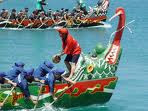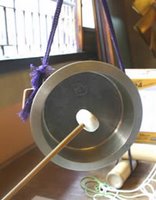[ . BACK to WORLDKIGO TOP . ]
:::::::::::::::::::::::::::::::::::::::::::::::::::::::::::::::::::::::::::::::::::::::::::::::::::
. Regional Festivals - From Hokkaido to Okinawa .
.................................................................................
Nagasaki Prefecture - 長崎県
on the island of Kyūshū.
The capital is the city of Nagasaki.
Nagasaki is the most Christianized area in Japan with Roman Catholic missions having been established there as early as the 16th century.
the former province of Hizen with the island provinces of Tsushima and Iki.
© More in the WIKIPEDIA !
. Nagasaki - Entries of this BLOG .
:::::::::::::::::::::::::::::::::::::::::::::::::::::::::::::::::::::::::::::::::::::::::::::::::::::
Huis Ten Bosch count down
New Year
. Maruyama Hana Matsuri 丸山花祭り Maruyama Flower (Geisha) Festival .
second Sunday in November
.................................................................................
Nagasaki Lantern Festival
 source : www.japantimes.co.jp 2013
source : www.japantimes.co.jp 2013
the Nagasaki Lantern Festival, which will be held as always during the Chinese New Year.
Commencing Feb. 10, 2013 and continuing for two weeks, the festival will feature its usual 15,000-plus paper lanterns, which will illuminate the streets, parks and temples of Nagasaki’s Shinchi Chinese district.
The highlight of the event will be the grand parade — known as the maso-gyoretsu, which will feature dozens of giant lanterns depicting all manner of historical and mythical characters.
One of the highlights will be lanterns depicting the 12 signs of the zodiac in Chinese astrology, with the snake, whose year the event marks the start of, sure to feature prominently.
.................................................................................
Nagasaki Sailings Ship Festival in April
Nagasaki Peron Festival in July
. Nagasaki Okunchi 長崎おくんち .
Nagasaki Kunchi
October 7 to 9
Sasebo New Year's Sale
Sasebo Kira Kira Illumination
:::::::::::::::::::::::::::::::::::::::::::::::::::::::::::::::::::::::::::::::::::::::::::::::::::
External LINKS :
Hirado City Festivals 平戸
Burning of the fields of Kawachi-tôge Pass - 川内峠野焼き
Cocks Festival and Miyancho Festival - コックスフェスタ
Hirado Autumn Festival - 平戸くんち城下秋まつり
Hirado Azalea Festival - つつじまつり
Hirado Flounder Festival - 平戸ひらめまつり
Hirado Jangara - 平戸ジャンガラ
Hirado Kunchi Festival - 平戸くんち
Hirado Summer Festival - 平戸港夏まつり
Hirado Tokajin Festival - 平戸海道渡海人まつり
Kappa Festival - がわっぱ祭り
Kigatsu Spring Lantern Festival - 木ヶ津千灯篭春まつり
Konaki Crybaby Sumo - 子泣き相撲
Lobster and Oyster Festival - エビ・カキ祭り
Oshima Bon Festival Dances - 大島盆踊り
Oshima Summer Festival and Fireworks Display - 大島村夏祭り花火大会
Tabira Spring Festival - たびら春まつり
Tabira Summer Festival - たびら夏祭り
Tachiura Port Fireworks Festival - 舘浦漁港花火大会
Tachiura Seribune Festival - 舘浦競漕船大会
Tachiura Suko-odori Dances - 須古踊り
Tei Seiko Festival - 鄭成功祭り
Tsuyoshi Chaichi Market - 津吉茶市
William Adams Memorial Ceremony - Anjin Ki 按針忌
source : www.city.hirado.nagasaki.jp
- Reference -
:::::::::::::::::::::::::::::::::::::::::::::::::::::::::::::::::::::::::::::::::::::::::::::::::::::::

William Adams
(24 September 1564 – 16 May 1620)
known in Japanese as
Miura Anjin (三浦按針: "the pilot of Miura"),
was an English navigator who travelled to Japan becoming the first ever Western Samurai. Adams was also to be the first Englishman ever to reach that country and was the inspiration for the character of
John Blackthorne in James Clavell's best-selling novel
Shōgun.
- - - More in the WIKIPEDIA !
‘Anjin’ play launches yearlong celebration of U.K.-Japan ties

LONDON
A play about William Adams, thought to be the first Englishman to set foot in Japan, is being staged in London to mark the start of J400, a yearlong series of events to celebrate 400 years of Anglo-Japanese relations.
“Anjin: The Shogun and the English Samurai” is a drama about Adams’ friendship with the first shogun, Tokugawa Ieyasu.
The play tells how Adams, a maritime pilot, was washed ashore near Usuki in present-day Oita Prefecture in 1600 and gradually became one of the shogun’s most trusted advisers. He was given the name “Anjin,” meaning pilot, and became a samurai.
...
In the play, Adams, who is played by Stephen Boxer, gradually becomes disillusioned with his homeland and begins to appreciate the Japanese culture and lifestyle.
source : www.japantimes.co.jp - Feb 8, 2013
 Samurai William: The Englishman Who Opened Japan
Samurai William: The Englishman Who Opened Japan
Giles Milton
With all the adventure, derring-do, and bloodcurdling battle scenes of his earlier book, Nathaniel’s Nutmeg, acclaimed historian Giles Milton dazzles readers with the true story of William Adams — the first Englishman to set foot in Japan (and the inspiration for James Clavell’s bestselling novel Shogun). Beginning with Adams’s startling letter to the East India Company in 1611 — more than a decade after he’d arrived in Japan — Samurai William chronicles the first foray by the West into that mysterious closed-off land. Drawing upon the journals and letters of Adams as well as the other Englishmen who came looking for him, Samurai William presents a unique glimpse of Japan before it once again closed itself off from the world for another two hundred years.
- source : amazon.com -
. Places in Edo - Placenames .
Anjinchoo 安針町 Anjin-Cho, Anjin Cho district
the estate in Edo where Anjin lived
Now Chuo ward, Nihonbashi, 室町 Muromachi
The name Anjin-Cho was used until the early Showa period.

 Anjin Dōri 安針通り Anjin Road
Anjin Dōri 安針通り Anjin Road
This name is still in use today.
 Memorial stone for Miura Anjin
Memorial stone for Miura Anjin
史蹟三浦按針屋敷跡
.................................................................................
. Jan Joosten van Lodensteyn (1557 - 1623) .
ヤン・ヨーステン ファン・ローデンスタイン / 耶揚子
Yayosu 八代洲 - -
Yaesu 八重洲 in Edo
Joosten arrived in Japan on the ship リーフデ号
Liefde with William Adams.
:::::::::::::::::::::::::::::::::::::::::::::::::::::::::::::::::::::::::::::::::::::::::::::::::::::::
Matsuo Basho about Nagasaki 長崎
Oranda mo hana ni ki ni keri uma ni kura
The Dutchmen have come
to watch the cherry blossoms !
put the saddle on my horse
Tr. Gabi Greve
MORE - discussion of this hokku :
. Holland (Oranda オランダ / 阿蘭陀) .
Basho's disciples in and from Nagasaki
. Mukai Kyorai 向井去来 .
. Tagami no Ama 田上尼 (たがみのあま).
Kikusha Ni 菊舎尼, The Nun from Tagami. The Nun Kikusha.
She was born in Ueda village of of Nagasaki 長崎市田上.
She was the wife of Kyorai's uncle
At the local temple Tokuzooji 徳三寺 Tokuzo-Ji there is a stone memorial of a hokku by Kyorai:
名月や たかみにせまる 旅こころ
Two more relatives of Kyorai
Ushichi 卯七 (うしち)Nephew of Tagami no Ama
Uchoo 魯町(ろちょう)
. Matsuo Basho 松尾芭蕉 - Archives of the WKD .
*****************************
Related words
 . Regional Folk Toys from Japan - GANGU .
. Regional Dishes from Japan - WASHOKU .
BACK : Top of this Saijiki
[ . BACK to DARUMA MUSEUM TOP . ]
[ . BACK to WORLDKIGO . TOP . ]
. Regional Folk Toys from Japan - GANGU .
. Regional Dishes from Japan - WASHOKU .
BACK : Top of this Saijiki
[ . BACK to DARUMA MUSEUM TOP . ]
[ . BACK to WORLDKIGO . TOP . ]
:::::::::::::::::::::::::::::::::::::::::::::::::::::::::::::::::::::::::::::::::::::::::::::::::::::






























